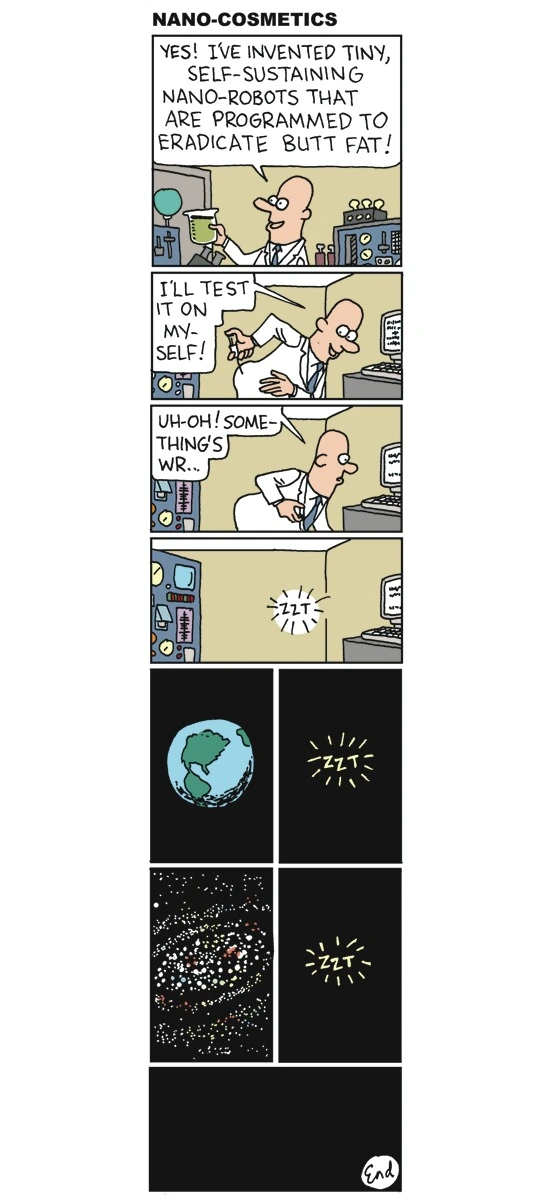this post was submitted on 25 Feb 2024
277 points (90.4% liked)
Comic Strips
12591 readers
3514 users here now
Comic Strips is a community for those who love comic stories.
The rules are simple:
- The post can be a single image, an image gallery, or a link to a specific comic hosted on another site (the author's website, for instance).
- The comic must be a complete story.
- If it is an external link, it must be to a specific story, not to the root of the site.
- You may post comics from others or your own.
- If you are posting a comic of your own, a maximum of one per week is allowed (I know, your comics are great, but this rule helps avoid spam).
- The comic can be in any language, but if it's not in English, OP must include an English translation in the post's 'body' field (note: you don't need to select a specific language when posting a comic).
- Politeness.
- Adult content is not allowed. This community aims to be fun for people of all ages.
Web of links
- !linuxmemes@lemmy.world: "I use Arch btw"
- !memes@lemmy.world: memes (you don't say!)
founded 1 year ago
MODERATORS
you are viewing a single comment's thread
view the rest of the comments
view the rest of the comments

I don't think this is necessarily true. The reason DNA is so affected by radiation is because it's malleable. It's built out of chemical building blocks that fit like Lego. Gray goo would likely be similar to extremely complex proteins which replicate like a physical version of a quine.
Flipping an individual bit through radiation is extremely easy, which is why we need error corrections, but despite that, we still get errors... Even if the probability of an error bypassing the ECC is extremely low, over a long enough timescale it will happen often enough to evolve. Especially in space where there is no atmosphere or magnetic field to reduce it.
I'm not talking about little tiny robots with batteries and computers, I'm talking about precisely formed, microscopic and deformable chunks of metal. That's why I brought up proteins- they do not carry any information themselves, and can sometimes form duplicates of themselves, such as in the case of prions.